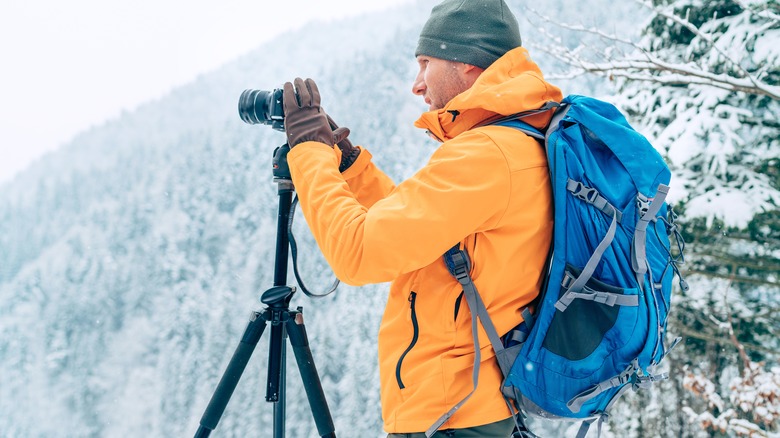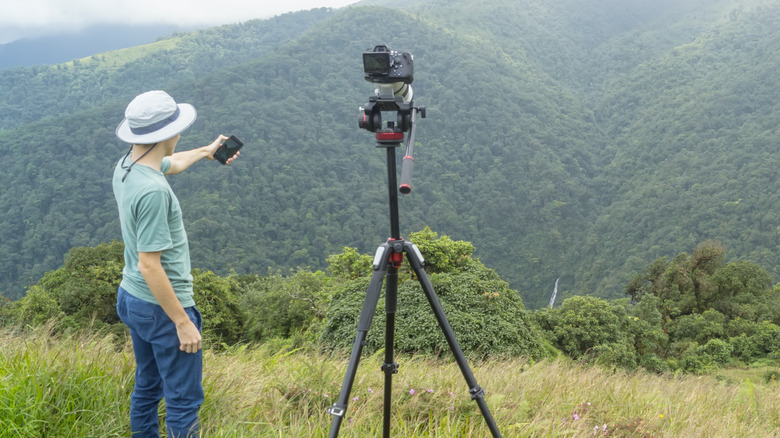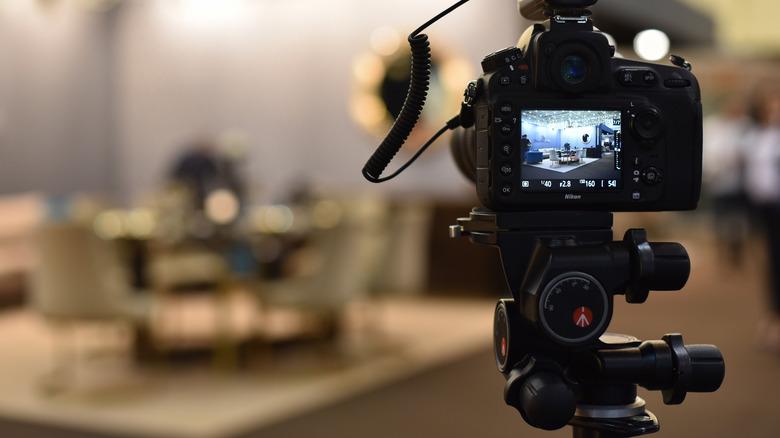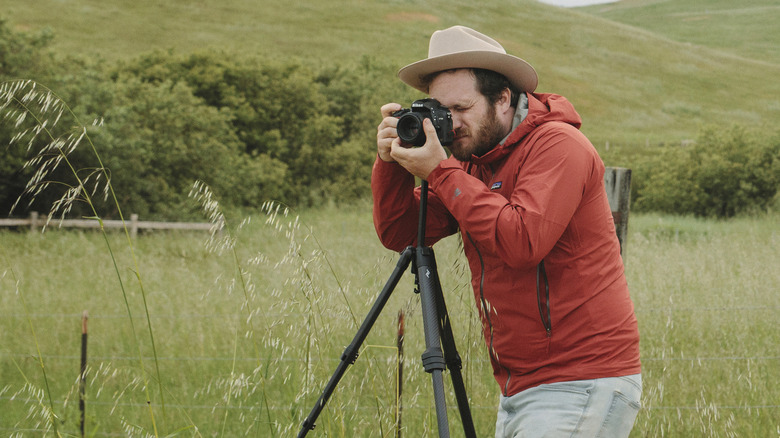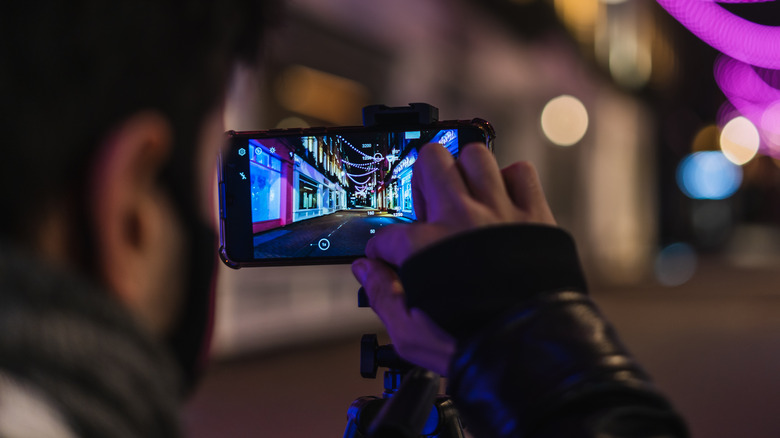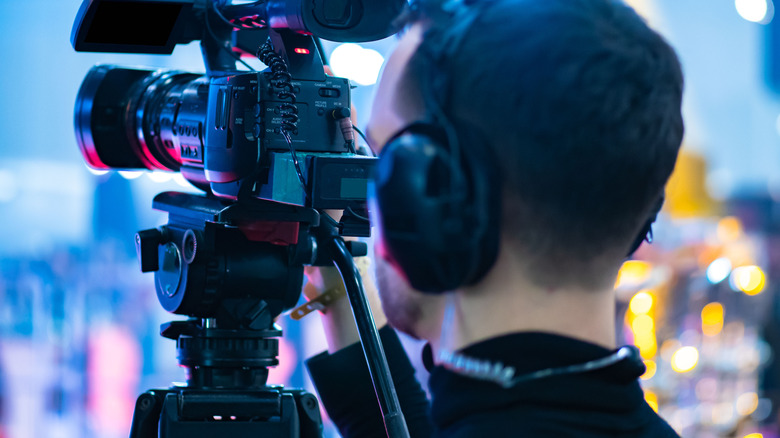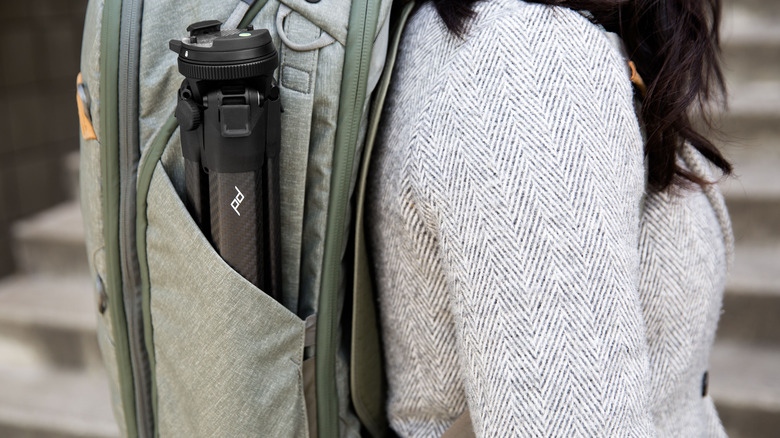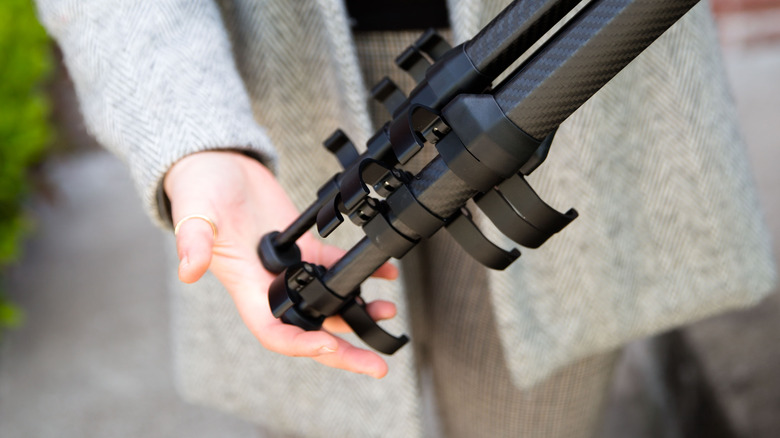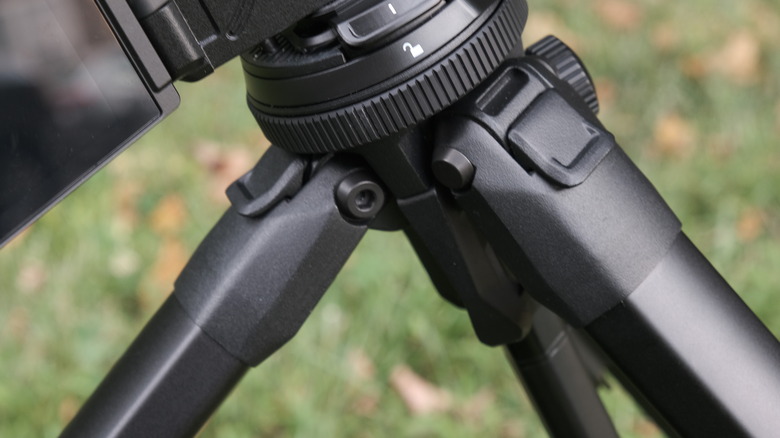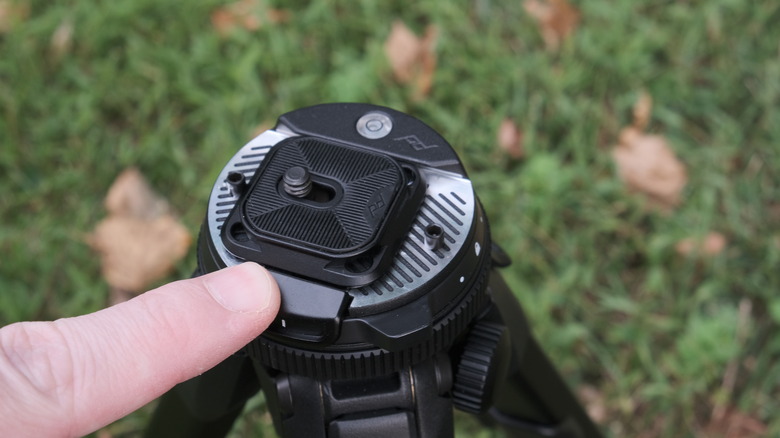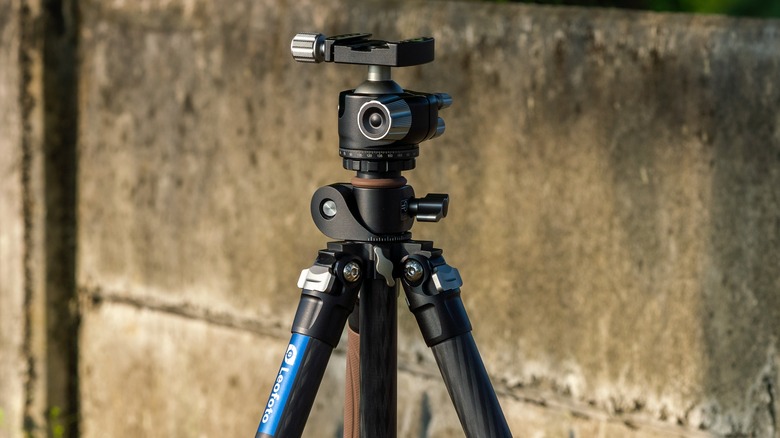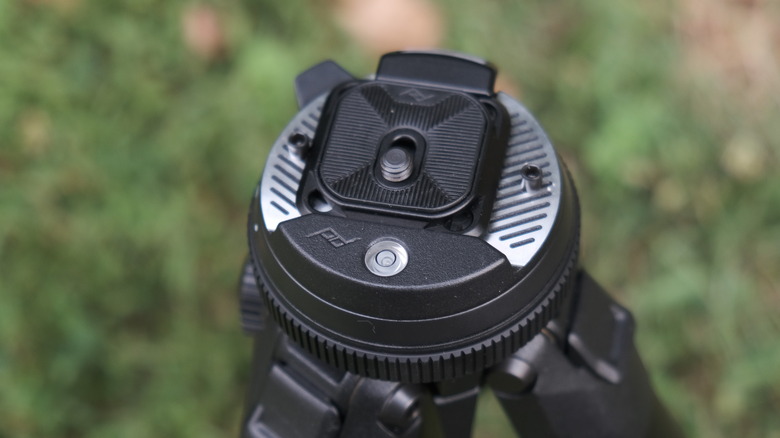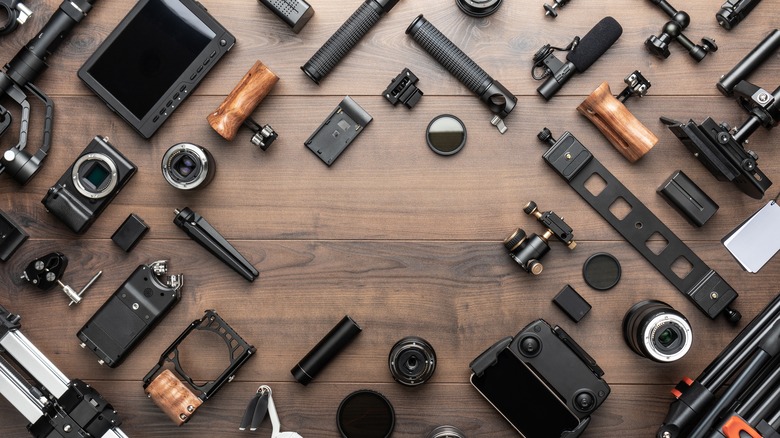The Most Important Features That Your Next Tripod Needs
Photographers and videographers know that the trusty tripod is their lifelong best friend. Camera systems come and go, lenses get new versions, and lighting is a never-ending struggle, but a good set of sticks will never disappoint you. Because a good quality tripod is long-lived, it should be a buy-once, cry-once investment. It's the one piece of photography equipment that can elevate your creative skills, helping you to get the crispest image every time.
When deciding on a new tripod, you must know what images you want to create. The market has a dizzying number of models, some with universal features and some specific to the use case they were designed for. A tripod is a stable platform you fasten your camera system onto. If you've spent hundreds or thousands of dollars on your camera and lenses, the last thing you want to do is skimp on the cost of a decent tripod. That expensive camera is only as good as the images you can get from it, and if your tripod isn't stable, every photo you take will be blurred. A good tripod opens up a new world of photographic skills, from astrophotography to long exposure or low light captures.
Price
A new, quality tripod could cost anywhere from $150 to over $1,000. That's a vast range to choose from, but it's easier to decide when you know what features are nice or non-negotiable. Cheap tripods might feature lots of plastics, and nothing is more heart-wrenching than seeing your tripod snap while holding your expensive camera. You can get stable, solid, affordable tripods by compromising advanced features, and that's okay. Decent tripods will help you get better images, and you can use those just fine until you advance your skills and realize that lack of those advanced features is holding your creativity back.
Mid-range tripods seem like good value, with advanced features for a modest increase in cost. The trap here is that mid-range tripods might have more features, but those increase the weight. Nobody wants to lug a heavy tripod around, especially when traveling or hiking. Once you know you'll be using your tripod often, you can skip the mid-range and go for the higher-end market. With the longevity of quality tripods, your cost of ownership is lower, as you won't be rebuying anytime soon. Top-of-the-line tripods often feature exotic materials, with carbon fiber being the most common. That material change reduces weight and improves stiffness and stability, but it can break easier than aluminum in some situations.
A smooth head
While the legs of the tripod keep your camera stable, the tripod head is the essential element for controlling your camera's movement. Cheaper tripods often come with an attached head, while more expensive models either let you remove the head or won't come with one. The most common tripod head for cheaper units is the pan-tilt head. This has either one handle to control horizontal movement, or two handles that control the horizontal and vertical axes. The tripod head you should start with is the ball head. This type of tripod head has one control that loosens or tightens the grip. That way, you can change both axes of movement in one go, and most units also let you change your camera orientation from landscape to portrait.
Other, more specialized tripod heads include the geared head, a version of the pan-tilt head with geared controls for precision control. These are often found in the studio, where you have more time to set up and aren't moving your tripod around much. They're a favorite of product or portrait photographers as a result. Pistol grip heads are variants of the ball head, with a trigger that releases the tension on the ball joint. Fluid heads are for video work and are engineered for smooth pans and other camera movements. Gimbal heads are used predominantly by sports and wildlife photographers. They easily support longer, heavier lenses while enabling smooth subject tracking.
Sturdiness
You might not realize that a heavy tripod is not necessarily stable, and one made with solid, durable materials could be easily overbalanced. When in use, tripods have to hold your camera steady, but they also have to deal with weather conditions and any accidental bumps or jolts you give. Carbon fiber and aluminum are the two most common materials for tripods, and each has advantages and drawbacks for the photographer to consider. Aluminum tripods are substantially cheaper but are heavier to carry, and they're also not fun to use in cold weather.
Carbon fiber is stiffer, lighter, stronger, and doesn't rust. Peak Design says its carbon fiber tripod is 20% more stable than its aluminum model, which translates to more chances of getting the shot you want instead of wasting time. The carbon fiber model is quicker to deploy, feels more sturdy, and is drastically easier to carry around when out of the studio.
Suitable height
Tripods have three different heights to consider — maximum, minimum, and stowed or transportation. Maximum is easy to figure out because you'll want to shoot at eye level most of the time, and your back will thank you, as will your neck. You'll also be able to shoot on hillsides or uneven ground if you have a maximum tripod height above your eye level. While some tripods have an adjustable center post, raising it raises the center of gravity, making the tripod less stable. You can adjust that by weighting down the middle of the tripod, and many models have a hook under the center post to do just that.
Minimum height should be considered if you want to photograph ground-level things. This could be macro of leaves, insects, or low vantage-point landscapes to get a unique viewpoint. Some tripods have legs that can swing out, so you can get even more down to the ground. The last height is vital if you want a portable tripod. This is less important for studio photography, so you need to know which type of photography you're buying the tripod for.
Load capacity
It's important to remember the weight of your camera system when buying a new tripod. You'll want to match the carrying capacity of your new sticks with what you're putting on top of them. That could be a reasonably lightweight mirrorless camera with a small lens, or you could be using a heavier telephoto lens. You may own a video camera or a substantially larger medium format or cine camera. In that case, you want to look for a tripod with a higher load capacity or additional stability features like spreaders that attach between the legs.
You'll also want to plan ahead here. You might only have a small camera right now, but that may not always be the case. Buying a tripod with a higher load capacity now means you won't have to upgrade in the future. You will also want to consider any attachments you may want to add, like video monitors, lighting, and microphones.
Portability
Think about where you are going to be using the tripod. The location you will be shooting in will inform the weight, length, and materials you want to look for. Tripods for the studio are heavier, with chunkier legs and often more leg sections for height adjustment. You can save some money by buying an aluminum tripod with more features, as the weight doesn't affect your use case as much.
Travel tripods are commonly shorter, made with carbon fiber, and fold to smaller dimensions. They're essential for any frequent traveler's kit bag, but you pay for the additional portability. Travelers who fly regularly will want to add the folded length of a tripod to their list of must-have features. Airlines can accommodate longer items, but it's easier to deal with if they fit into standard suitcases. The last thing to consider is how easy it is to set up or fold down the tripod. The more leg sections it has, the longer it will take to set up or tear down. That's important if shooting in a rush.
Locking legs
Tripod legs use two common tube locks on their legs. Photographers get very attached to one type or another, but both perform almost exactly as well. Tests have shown that both lever and twist locks have the same performance for stiffness and damping (via The Center Column). That means you can choose the type that suits your ergonomic needs without worrying if your tripod legs will unlock at any time.
Both lock types work via compression, with slightly different designs. Flip or lever locks rotate a cam that compresses the outer tube to lock it together with the lower one. Many photographers prefer this type as they can see or feel instantly which position the lock is in. Twist locks have a threaded collar underneath that puts pressure on a plastic section between the two leg tubes. The lock position isn't easy to figure out by looking at the collar or by touch, as it is the same from all angles. Neither lock type should unlock from accidental bumps or jolts. If your tripod does, it's either of poor construction or has damage.
Leg flexibility
All tripods have a maximum angle their legs can open out to, but not all have the same angle. Tripods for video work usually have support bars attached to the center post or to each other at a central point. This adds stability and guards against torsion effects as the video fluid head is panned across the scene. The additional support bars mean that the tripod's minimum height is set fairly high, as it can't open up further than the supports allow. Some video tripods allow you to remove this support so that the legs can function independently.
Other tripods can unlock their maximum angle and be laid almost flat. This gets the tripod head closer to the ground, giving your camera new viewpoints. This is also handy if you want to use a table as support or to get closer to your subject when shooting macro imagery. If the price of a tripod that unlocks its legs and one that can't isn't much of a gap, it's better to buy the one that can, as you will find it useful at some point.
Quick-release plates
Modern cameras come with a threaded insert on the bottom to attach to your tripod or monopod, and heavy lenses also have a similar threaded section at their balancing point. That's good for stability, as you don't want your camera to detach, but bad for usability, as it's hard to unscrew if you want to go handheld. The solution is known as a quick-release plate. This piece of equipment screws onto your tripod and then is grabbed by a matching section on your tripod head. It gives you the best of both worlds — stability and convenience — but you can buy the wrong one.
A cheap tripod often uses plastic for its quick-release plate and clamp. That's great until it breaks, and you throw the entire tripod away. What you want is a quick-release plate compatible with the Arca-Swiss quick-release system. Instead of plastics, these are made from aluminum. They enable you to slide your camera onto a tripod without rotating anything. Because the clamp is universal, you can keep the quick-release plates on your cameras or lenses, so you don't have to switch them out. Video fluid heads also have a similar system, but those lock in place so they can't fall out.
Boom functionality
Some tripods let you remove the center post and re-hang it upside-down to suspend the camera underneath the tripod for low to a ground point-of-view. Other manufacturers also engineer things so you can put the center column at 90 degrees to its normal position, which is great for top-down flat-lay photography. This feature is optional, but once used, it's hard to use a tripod without it simply because it gives you more options, which is never a bad thing in photography.
Having boom functionality is one of the only reasons to have a center post on your tripod. Normally, extending your center post above its starting position reduces your tripod's stability for every inch you raise it. That loss of stability doesn't occur when the center post is underslung, as the camera weight lowers the center of gravity of your whole tripod. This also gives you the option of impossible angles that wouldn't be able to be filmed normally.
Included accessories
In addition to their primary attributes, many tripods have additional extras that make them more usable. The most common is a spirit level, which is usually built into the side of the tripod head or sometimes on the platform where the three legs meet. This helps you get your tripod level or to show the angle you are shooting at so you can repeat your shot. This is essential for landscape photography, so you can get your horizon straight with minimal post-production needed.
Tripods can also come with attached toolkits to ensure smooth movement of all joints or to tighten up screws and bolts over time. Some come with hooks at the bottom of the center post to hang sandbags or other weights to help stabilize the center of mass. Manufacturers often add additional benefits, like the smartphone mount that Peak Design stows inside the center post. These included accessories aren't essential, but they can make a choice between two otherwise similar tripod systems easier.
Manufacturer ecosystem
When buying a low-cost tripod, often, it will be limited in what additional accessories are available. Most won't have removable tripod heads, quick-release plates are often plastic or proprietary, and adapters to adjust for shooting conditions are non-existent. That changes if you buy mid- or high-end tripods, which are more systems of camera support that can be accessorized to suit the environment you are shooting in.
One of the more popular high-end manufacturers, Gitzo, treats its tripod range as a modular system. They have 53 different accessories, which can be used on every of their tripod systems. These range from simple spikes or rubber feet to grip the ground better, or specialized feet like snow shoes for using the tripod in wintry conditions. Other accessories cover camera brackets, spirit levels, and mounts for multiple cameras. The point here is that you're not just buying a tripod. You are buying a platform that you can adapt to your needs.
